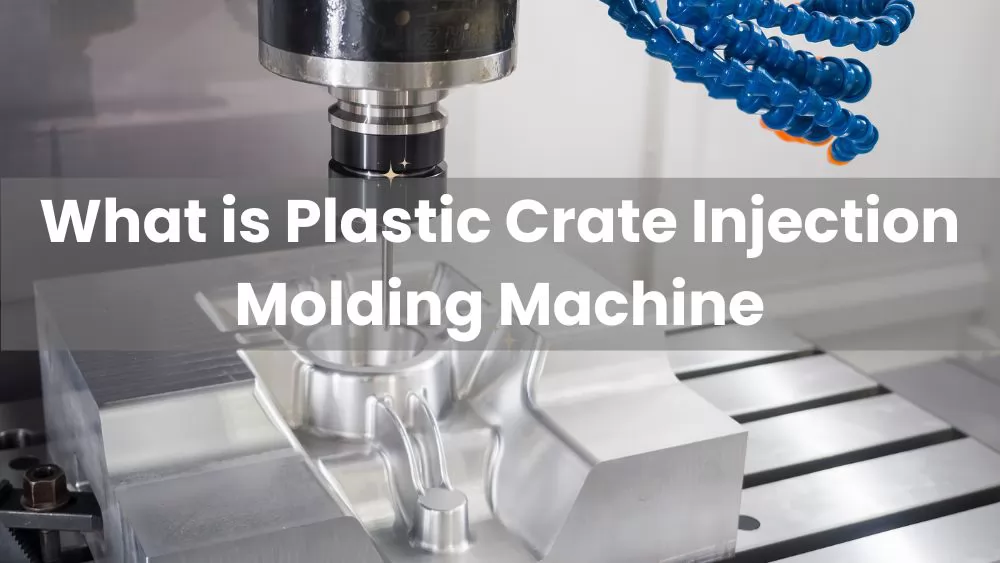
Plastic crate injection molding machine definition
Plastic crate injection molding machine is a type of equipment used to manufacture plastic crates through the injection molding process. Injection molding is a manufacturing process in which molten plastic material is injected into a mold cavity, where it cools and solidifies into the desired shape.
The plastic crate injection molding machine consists of a hopper, an injection unit, a clamping unit, and a control system. The hopper is used to store and feed the plastic material into the machine. The injection unit melts the plastic and injects it into the mold cavity, where it takes the shape of the crate. The clamping unit holds the mold in place and applies pressure to keep it closed during the injection process. The control system manages the entire process, including temperature, pressure, and timing, to ensure the quality and consistency of the final product.
The plastic crate injection molding machine is designed specifically for the production of plastic crates, which are used to transport and store various goods. These crates are known for their durability and strength, making them a popular choice for industries such as agriculture, food and beverage, logistics, and automotive.
Benefits of Plastic Crate Injection Molding Machine
Plastic crate injection molding machines have several benefits, including:
-
Precision and Consistency: Injection molding machines are capable of producing high-quality and consistent products with minimal variation. This precision is achieved through the use of computer-aided design and manufacturing techniques.
-
Speed and Efficiency: Injection molding is a fast and efficient process that can produce large quantities of plastic products quickly. This is particularly advantageous when producing plastic crates, which are often used in bulk.
-
Versatility: Injection molding machines can be used to produce a wide range of plastic products, including crates of different sizes and shapes.
-
Cost-effectiveness: Injection molding machines can produce plastic products at a lower cost than other manufacturing processes, especially when producing high volumes.
-
Sustainability: Plastic crate injection molding machines can be designed to use recycled plastic materials, making them a more sustainable option.
-
Automation: Injection molding machines can be fully automated, reducing the need for human intervention and increasing production efficiency.
Overall, plastic crate injection molding machines offer numerous benefits, making them a popular choice for manufacturers looking to produce plastic crates in large quantities.
The future of plastic crate injection molding machine looks promising with the advancements and innovations in technology.
Some potential developments that could shape the future of plastic crate injection molding machine are:
-
Smart Manufacturing: The integration of smart technology such as artificial intelligence (AI), the Internet of Things (IoT), and machine learning (ML) is expected to transform the manufacturing process. Smart manufacturing will improve the efficiency and productivity of the plastic crate injection molding machine, reduce downtime, and enhance product quality.
-
Sustainable Materials: With an increasing focus on sustainability, the demand for biodegradable and eco-friendly materials is expected to grow. The plastic crate injection molding machine will have to adapt to use these materials and develop new techniques to reduce waste and minimize environmental impact.
-
3D Printing: 3D printing technology is being explored as a potential alternative to traditional injection molding techniques. It offers greater design flexibility, reduced lead times, and the ability to produce smaller volumes. As this technology develops, it could provide a viable alternative to traditional injection molding techniques.
-
Automation: The use of automation is expected to increase in the plastic crate injection molding industry. This includes the use of robots for material handling, quality control, and packaging. Automation will improve efficiency, reduce labor costs, and enhance safety in the manufacturing process.
-
Additive Manufacturing: Additive manufacturing or 3D printing is expected to play an increasing role in the manufacturing process. This technology will allow for the production of more complex geometries, reduce tooling costs, and offer greater design flexibility.



